With a stunning hue that ranges from pale lilac to deep violet, Amethyst has been highly-valued throughout history for its beauty. Apart from its aesthetic appeal, it’s also well-loved for its purported healing and spiritual properties.
Its popularity remains today as it continues to be used in everything, from eye-catching jewelry to one-of-a-kind sculptures and home decor.
But with its beauty comes the difficulty of finding it. While Amethyst can be found in many parts of the world, discovering this gem in its natural environment can be challenging.
Without the right guidance, it can be difficult to know where to look or how to identify high-quality specimens. Amethyst mining can also be physically demanding and can require navigating rugged terrain or working in difficult conditions.
That’s why we’ve created this guide to help you discover this beautiful gem and enjoy the experience of exploring the natural world at the same time. You’ll have everything you need to track down amethyst across the state, and Rock Chasing’s California Rocks & Minerals Identification Field Guide can handle the rest.
It keeps you from walking past something valuable or bringing home a stone you can’t identify, saving you hours of guesswork. Are you ready?
What is California Amethyst?
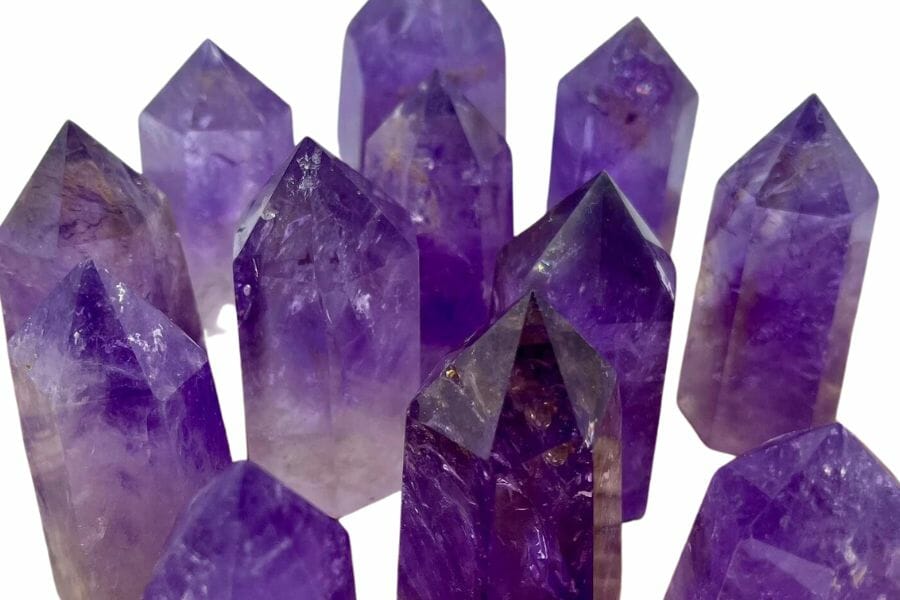
Amethyst is a beautiful and unique gemstone that belongs to the quartz family. It’s characterized by its stunning purple hue caused by the presence of iron and other trace elements in its crystal structure.
As we’ve mentioned above, Amethyst can be found in many parts of the world, including Brazil, Uruguay, and Zambia. In the United States, in naturally occurs in several locations, including California. When you want to find amethyst near you living in California is a big perk!
Typically found in geodes or as individual crystals, the Amethyst in California is typically a deep violet color, which means they are highly prized by collectors and jewelry makers. Let’s find out where exactly these natural wonders can be discovered here in our state.
- The deep experience and understanding of our team about the area
- Recommendations from local groups and clubs
- How easy it is to get the a particular location
- Safety and potential hazards when collecting
- Weighing private and public locations
- The ability for both experienced and novice amethyst enthusiasts to find great samples
With these factors in mind we’ve been able to put together a fantastic list that just about anyone can use!
The Different Types Of Amethyst And What They Look Like
Different environments contribute to the diverse appearances and types of this beautiful mineral.
The variety seen in amethyst is due to trace elements and impurities within the crystal structure. Elements like iron and manganese can alter the hue, leading to the beautiful spectrum of purples and other colors found in these crystals.
Brandberg Amethyst
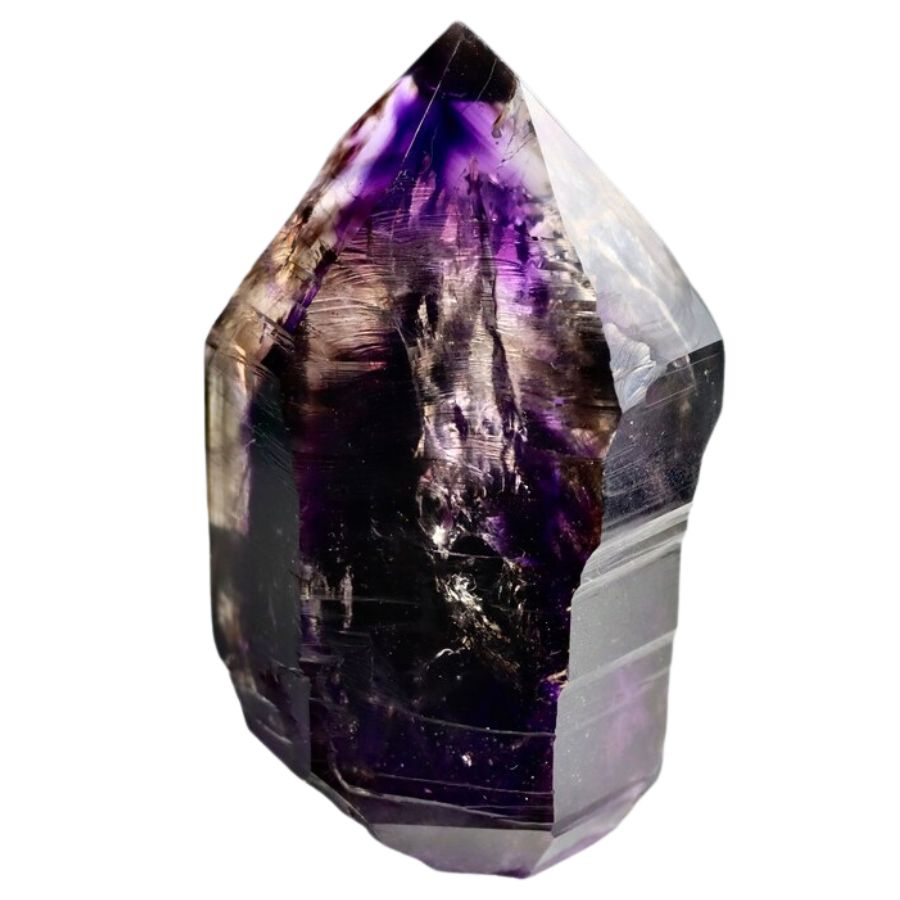
Brandberg amethyst is a captivating variety of quartz, renowned for its unique blend of elements like silicon dioxide, iron, and trace amounts of other minerals.
These components come together to form a crystal that not only holds geological significance but also showcases a striking array of hues and features.
The appearance of Brandberg amethyst is truly remarkable, characterized by its color range from deep purples to vibrant lilacs.
The varying shades are a result of the iron content within the crystal structure, which can fluctuate, leading to diverse color intensities and patterns in each specimen.
Brandberg amethyst stands out for its inclusion patterns and the presence of phantom crystals within its structure.
These internal “ghosts” are formed by layers of other minerals, offering a glimpse into the crystal’s growth history and adding to its allure for those fascinated by the wonders of the natural world.
Most people don’t realize how many incredible rocks California hides in its mountains, deserts, and beaches. This guide shows exactly what you’ve been walking past.
🌈 300+ color photos of real California specimens
🪨 Raw + polished examples make identification simple
🏜️ Covers coastlines, gold country, Sierras & more
💦 Waterproof pages built for real outdoor use
Ametrine

Ametrine is an intriguing mineral that captures the imagination of those interested in rocks and minerals. This unique gem is a combination of two quartz varieties: amethyst and citrine.
The beauty of ametrine lies in its striking coloration, which ranges from a blend of vibrant purple and golden yellow.
This color variation is a result of differing oxidation states of iron within the crystal, influenced by temperature and radiation exposure during formation.
Ametrine is notable for its distinct zoning of colors, where purple and yellow hues can be clearly seen in the same crystal. This feature, combined with its unique composition, sets ametrine apart from different kinds of amethyst.
Chevron Amethyst
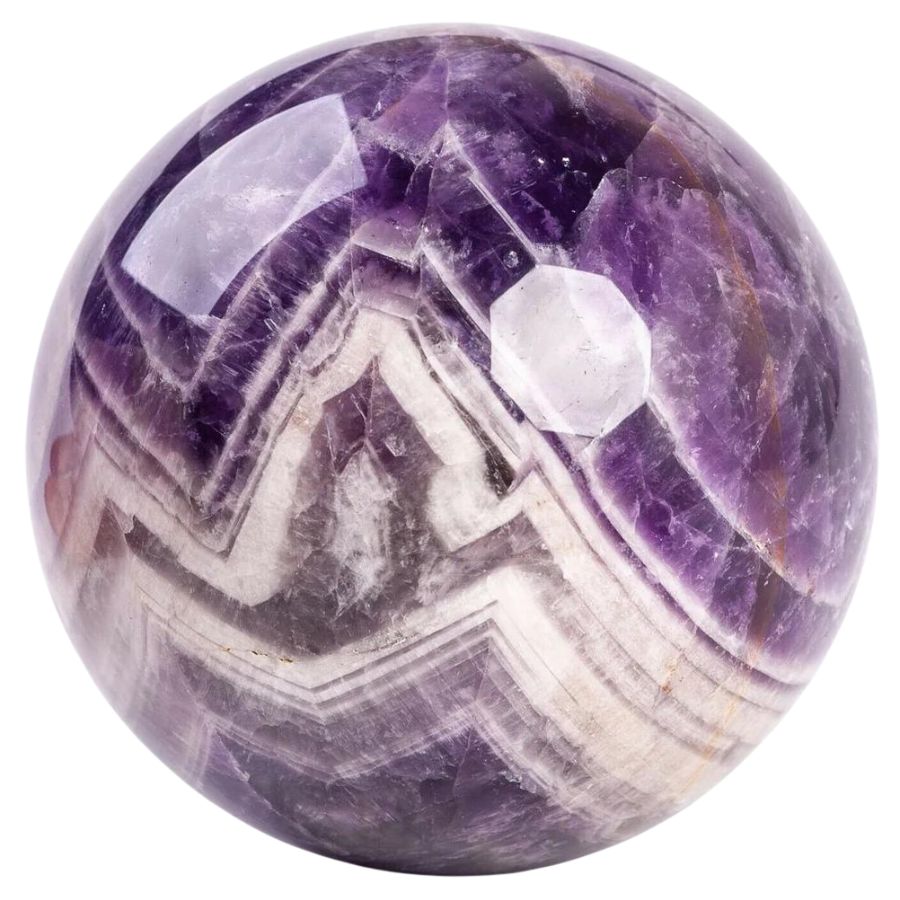
Chevron amethyst is a captivating type of amethyst known for its distinctive pattern. It’s easily recognized by its unique V-shaped or chevron patterns, which are a combination of deep purple and white or clear quartz layers.
These patterns and color variations are due to differences in iron content and other impurities in the layers, resulting in the striking contrast seen in chevron amethyst.
Chevron amethyst is not only beautiful but also a subject of interest for its formation process. The alternating layers of colors provide a visual record of the crystal’s growth history, making it a fascinating example for geological study.
Auralite
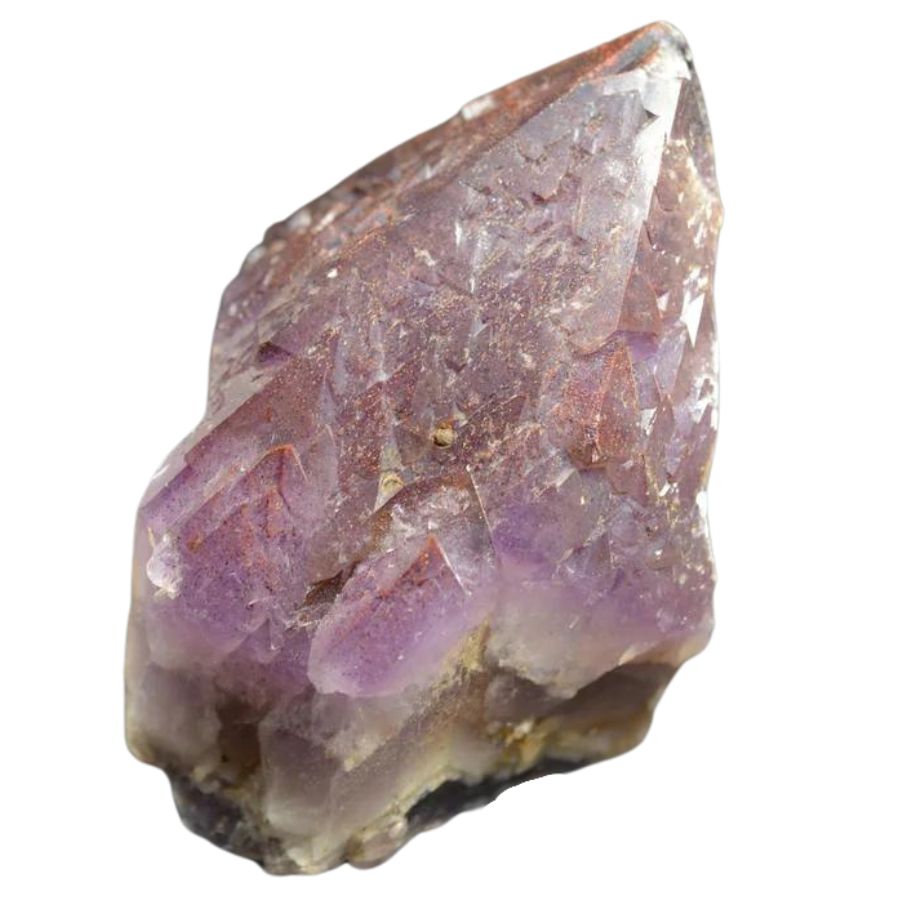
Auralite is an intriguing type of mineral that’s a combination of amethyst and several other trace minerals. Its composition includes silicon dioxide from amethyst, along with a mixture of elements like iron, copper, and titanium.
This mineral’s appearance is quite distinct, often showing a deep purple hue similar to what amethyst looks like, but with additional layers or inclusions of other colors.
These variations in color are due to the various trace minerals present in auralite, each contributing to its unique and colorful display.
A standout feature of auralite is the presence of multiple minerals within a single specimen, sometimes including up to 23 different types.
This mix not only gives auralite its diverse color range but also makes it a fascinating subject for those studying minerals and their properties.
Prasiolite
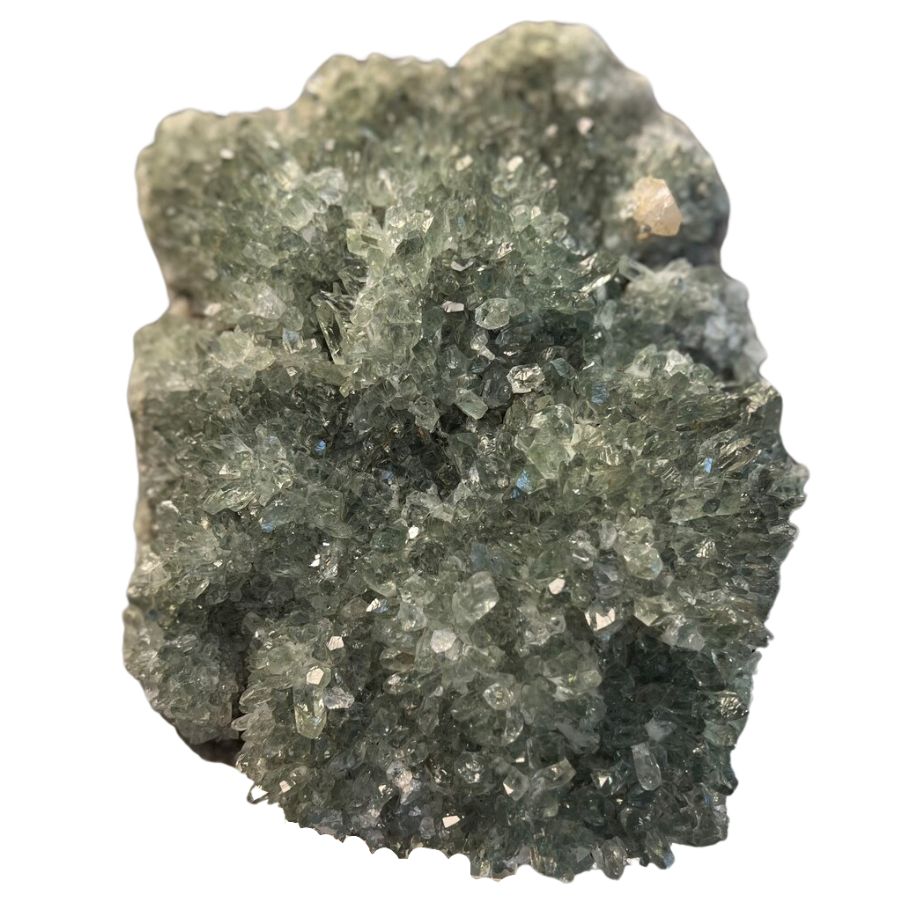
Prasiolite is an interesting variety of quartz. It often contains traces of iron, which play a key role in giving prasiolite its unique color.
This mineral is known for its beautiful green color, which can range from a light, almost transparent green to a deeper, more olive shade.
The green color of prasiolite is usually the result of heat treatment, either occurring naturally in the earth or artificially, transforming certain types of amethyst or yellowish quartz into prasiolite.
Naturally-occurring prasiolite is rare, as most available prasiolite is created through artificial means.
Cacoxenite amethyst
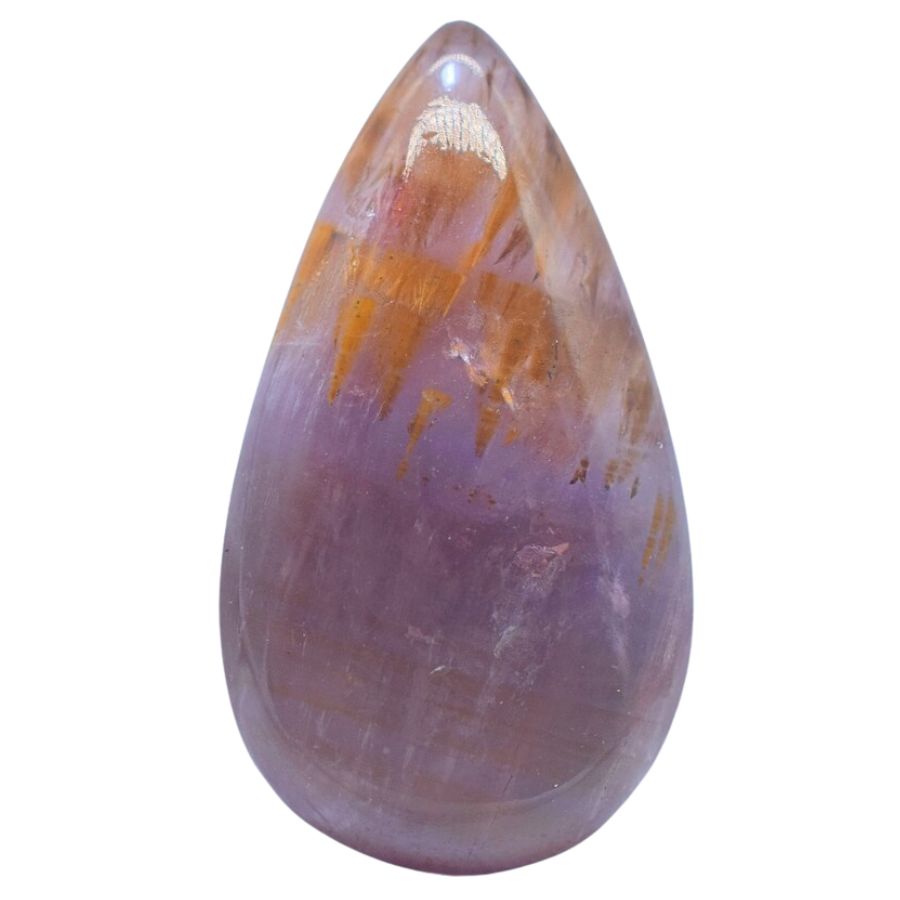
Cacoxenite is an intriguing mineral primarily composed of iron, aluminum, and phosphate, along with other elements like oxygen and hydrogen. This combination of elements gives cacoxenite its unique chemical makeup and properties.
Cacoxenite typically exhibits a striking golden-yellow to brownish-yellow color. This coloration is mainly due to the presence of iron in its structure, which imparts the rich hues that characterize this mineral.
A notable feature of cacoxenite is that it often forms as an inclusion within other minerals, such as amethyst, creating a beautiful contrast.
These inclusions of cacoxenite can appear as radiating or feathery formations, adding an intricate and fascinating aspect to the host mineral.
Phantom Amethyst
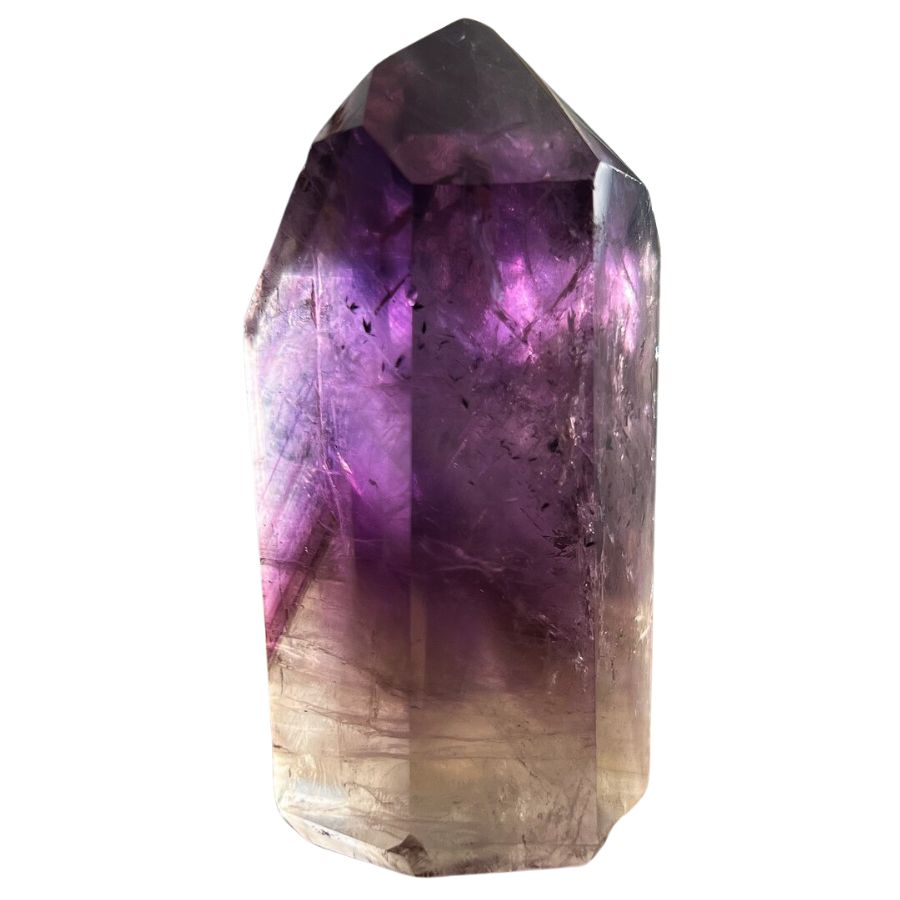
Phantom amethyst is a fascinating variety of amethyst. It stands out due to the presence of “phantoms” – ghost-like inclusions within its structure, which give it a distinct and layered look.
In phantom amethyst, one can observe a range of colors from deep purples to lighter hues, often appearing in layers or as phantom shapes within the crystal.
These color variations are typically due to trace amounts of iron and other minerals that get trapped during the crystal’s growth, influencing its final color.
Phantom amethyst provides a visual record of the crystal’s growth history. The crystal outlines and layers within the stone are formed by pauses in the crystal’s growth, offering a glimpse into geological processes over time.
Pink Amethyst
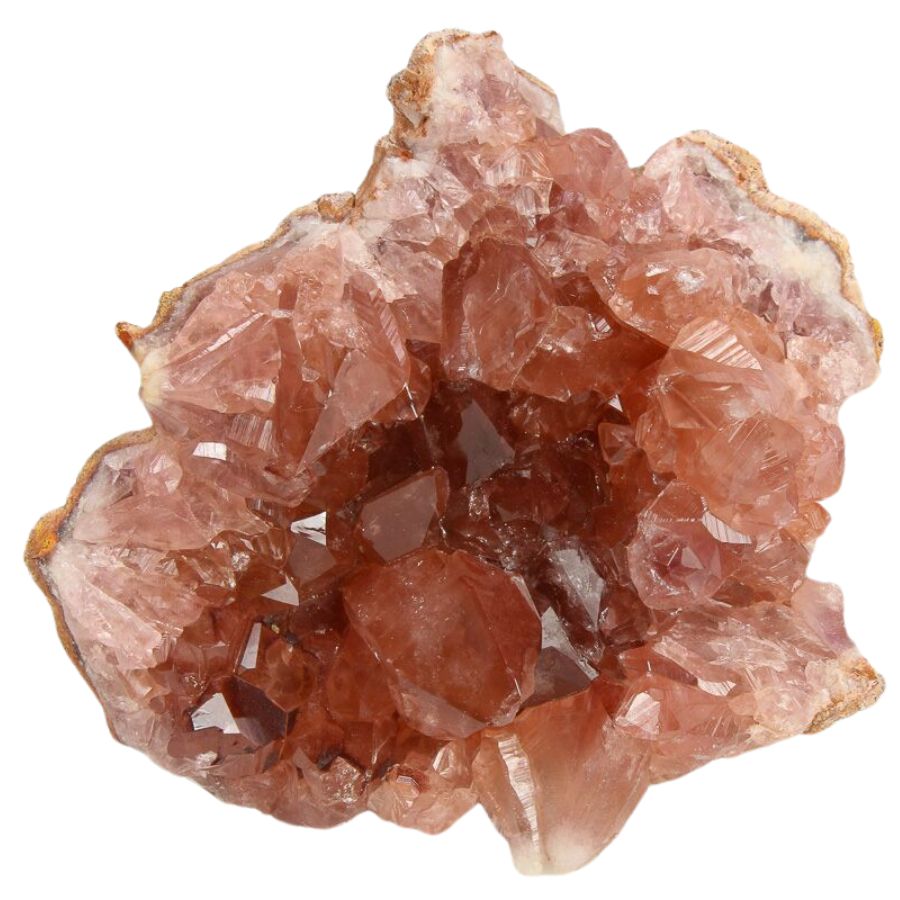
Pink amethyst is a unique and relatively rare variety of the common mineral amethyst. The presence of trace elements, particularly iron, contributes to its distinct pink hue.
The appearance of pink amethyst ranges from a delicate, light pink to a deeper, more vivid pink.
This variation in color is largely due to the concentration and distribution of iron within the crystal, which affects how light interacts with the mineral.
Pink amethyst is its often found in geodes or clusters, where multiple crystals grow together in a captivating display.
Amethyst Geodes
Amethyst geodes are fascinating natural formations, with traces of iron giving them their famous purple color. These geodes form in volcanic rocks and are essentially hollow, lined with amethyst crystals.
A key feature of amethyst geodes is their crystal-lined cavity, which creates a stunning natural display. When you look inside an amethyst geode, you’ll see a range of purple hues, from light lavender to deep violet.
The color variation is due to the amount of iron and the specific conditions under which the crystals formed, such as temperature and the presence of other trace elements.
Geodes can vary greatly in size, from small enough to fit in your hand to large enough to stand in, and each one is unique in its crystal formation and color pattern.
Cactus Amethyst
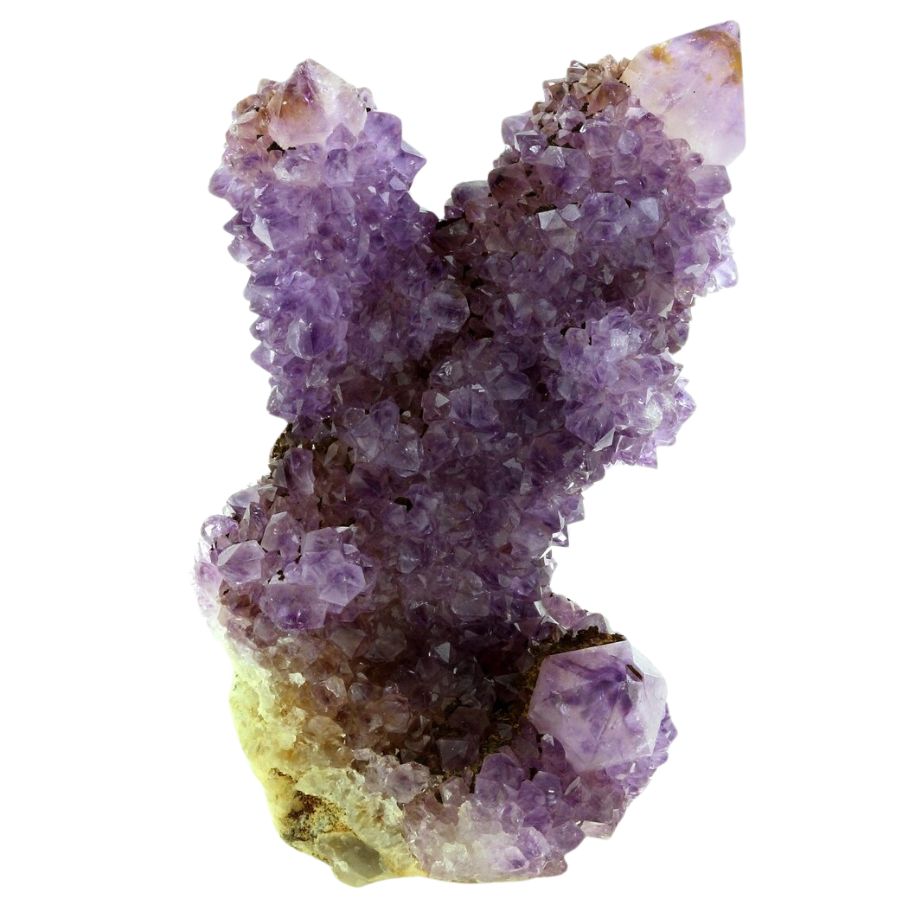
Cactus amethyst is also known as spirit quartz. Its unique structure is enriched with additional minerals, which contribute to its distinctive appearance.
This type of amethyst is characterized by a central quartz crystal covered in smaller crystal growths, giving it a spiky, cactus-like appearance.
The color ranges from pale lilac to deep purple, with the variations largely influenced by the amount of iron and other trace elements within the crystals.
A notable feature of cactus amethyst is the way the smaller crystals radiate outward from the central crystal.
This formation not only creates a stunning visual effect but also makes each piece of cactus amethyst a unique and fascinating specimen.
Regarding the price of amethyst, it can vary significantly based on the size, quality, and depth of color. While smaller, less vibrant pieces are relatively affordable, larger specimens with deep, rich colors can be quite valuable.
Scepter Amethyst
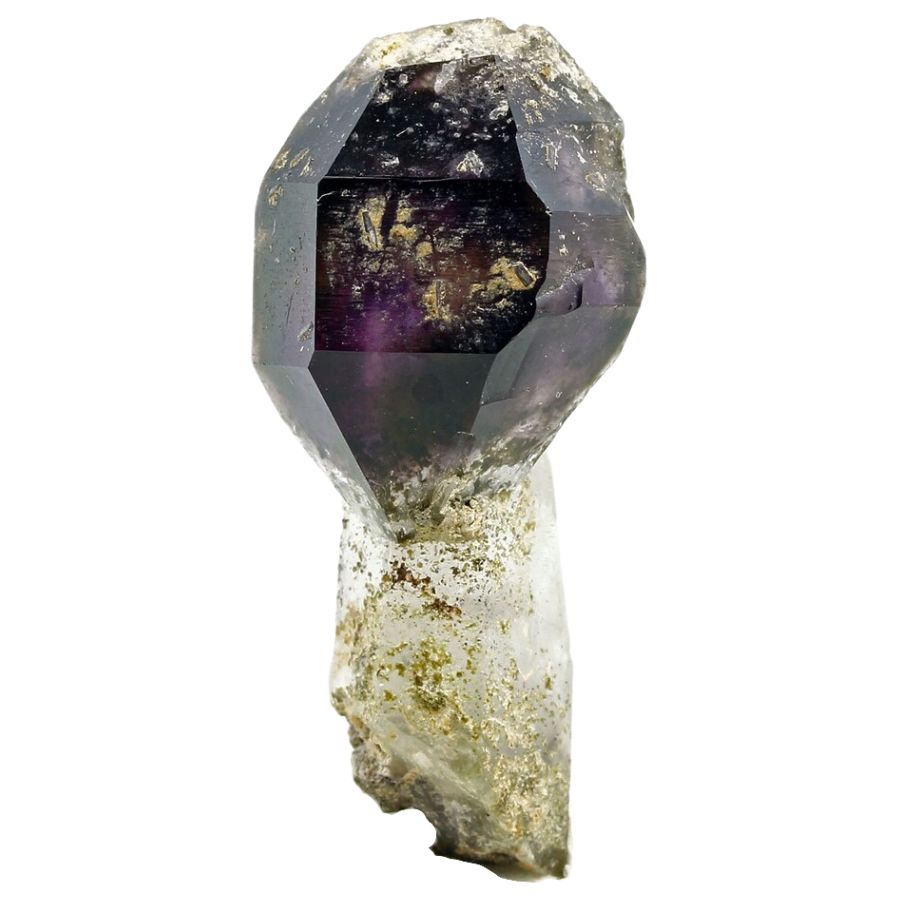
Scepter amethyst gets its name from its distinctive scepter-like formation, where a larger crystal cap sits atop a smaller crystal stem.
The color variations in scepter amethyst are influenced by the amount of iron and other trace elements within the crystal, coupled with the specific conditions under which it formed.
A key feature of scepter amethyst is its symbolic scepter shape, representing a crystal formation process where a second phase of growth occurs on an already-formed crystal base. This creates a striking and regal scepter-like appearance.
Smoky Amethyst
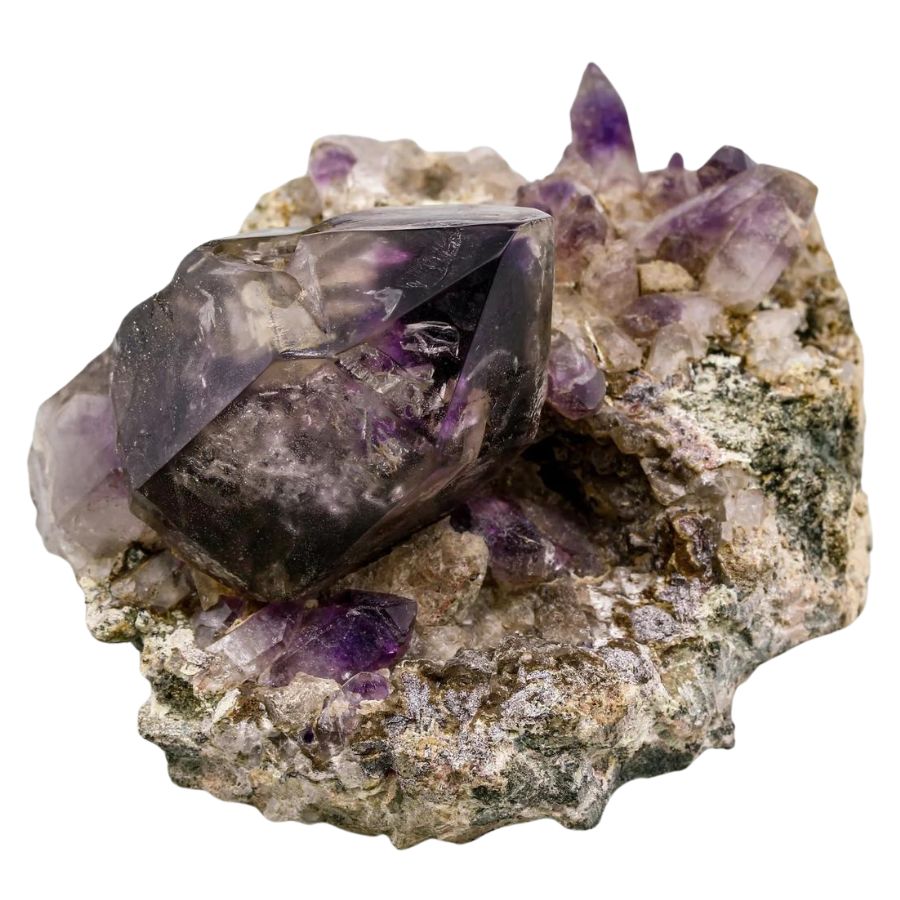
Smoky amethyst is a unique variation among amethyst types that combines features of both smoky quartz and amethyst. The presence of trace elements like iron and aluminum gives it its unique coloration.
This mineral exhibits a blend of smoky brown and purple hues, creating a captivating visual effect. This is due to natural irradiation and the varying amounts of impurities, which influence the depth and intensity of both the smoky and purple colors.
A notable feature of smoky amethyst is its dual-tone appearance, which is not commonly found in other quartz varieties.
Tools You Will Need
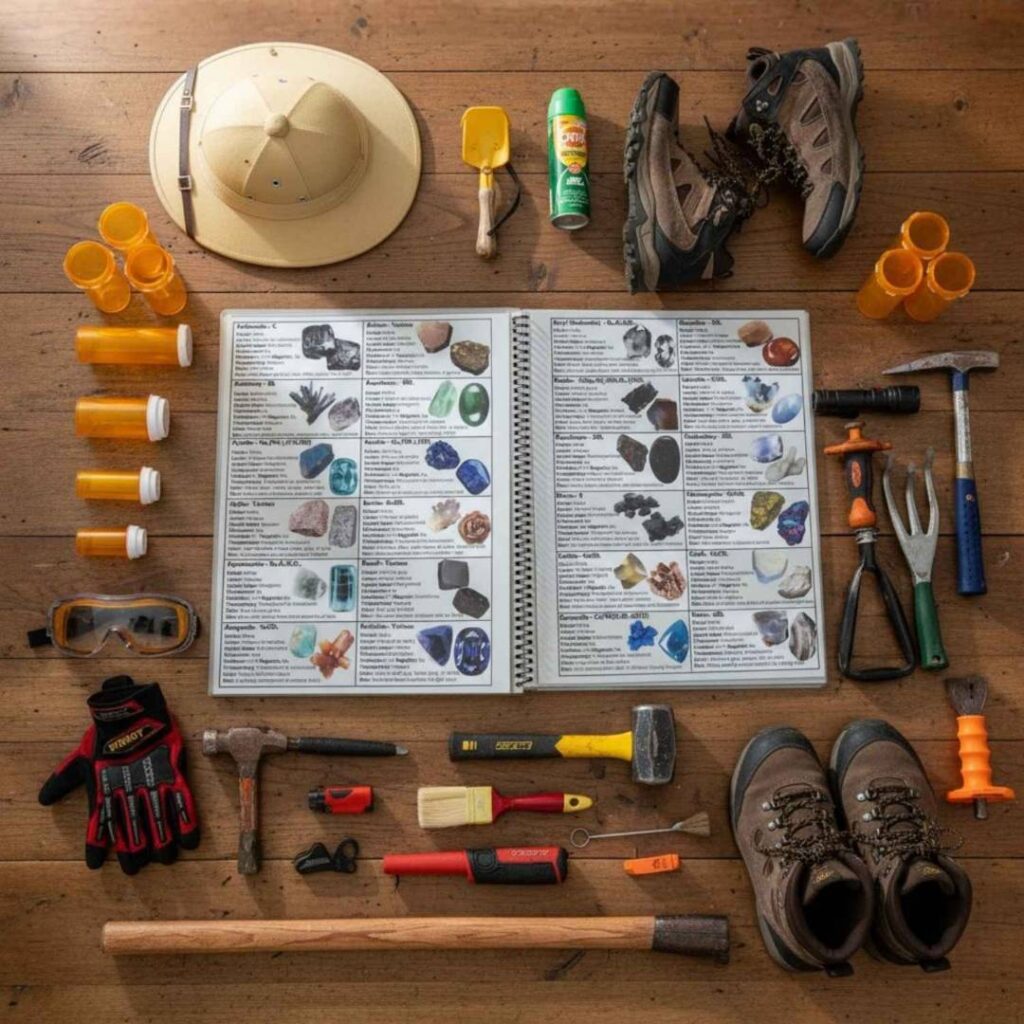
Amethyst often hides in rough terrain, so having a few basic tools makes the search much easier. You don’t need a lot of gear to get started, just a couple of items that help you loosen soil, check potential crystals, and carry your finds safely.
A Dependable Field Guide – Essential
Rockhounds know how much time can disappear when you’re trying to figure out what you’ve actually found. A solid field guide cuts through that uncertainty. It gives you quick clarity in the moment, keeps you from second-guessing your best finds, and turns every trip into a smoother, more confident search.
That’s where Rock Chasing’s California Rocks & Minerals Identification Field Guide earns its place in your pack. It covers more than 120 California rocks, minerals, and crystals, supported by over 300 photos, so you can identify specimens in seconds.
The laminated, waterproof pages stand up to mud, grit, and creek spray, and the steel binding handles years of field use. Clear visuals and simple reference facts make it easy to learn the basics of geology in a hands-on way.
When you want accurate information fast, and you want it in a form that survives real California conditions, this guide removes the guesswork and lets you focus on the hunt.
Digging Trowel – Essential
A small trowel is perfect for scraping away loose dirt and gently uncovering pockets where amethyst might sit. It gives you control so you don’t damage crystals while digging. Beginners like it because it’s easy to use and works well in tight spaces.
Spray Bottle – Recommended
A simple spray bottle helps you see color and shine more clearly. A quick mist of water can reveal the purple tones of amethyst that dry dust and dirt can hide. It’s a lightweight way to make identification easier on the spot.
Soft Bristle Brush – Optional
A brush with soft bristles helps clean off crystals without scratching them. It’s not required, but it’s handy if you want to see details before deciding what to keep. Many people enjoy using it because it keeps their finds looking their best.
Small Bucket or Pouch – Essential
Amethyst can be fragile, so it’s important to have something sturdy to carry your pieces in. A bucket or pouch keeps your finds safe and separate from harder rocks that might chip or crack them. It also makes it easier to stay organized as you explore.
The Best Spots To Find Amethyst in California
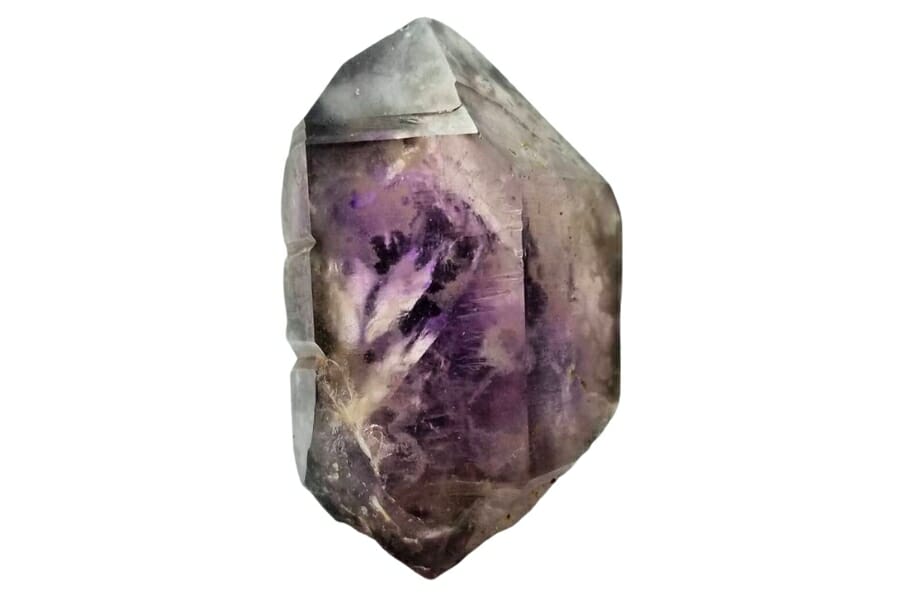
With a state as big as ours, it’s no surprise that there are plenty great places to mine gems here in California. But not all of these have Amethysts in them, too. So to help you have a successful time mining California Amethyst, we’ll point you to some of the most remarkable places here.
Always Confirm Access and Collection Rules!
Before heading out to any of the locations on our list you need to confirm access requirements and collection rules for both public and private locations directly with the location. We haven’t personally verified every location and the access requirements and collection rules often change without notice.
Many of the locations we mention will not allow collecting but are still great places for those who love to find beautiful rocks and minerals in the wild without keeping them. We also can’t guarantee you will find anything in these locations since they are constantly changing.
Always get updated information directly from the source ahead of time to ensure responsible rockhounding. If you want even more current options it’s always a good idea to contact local rock and mineral clubs and groups
Shelter Cove
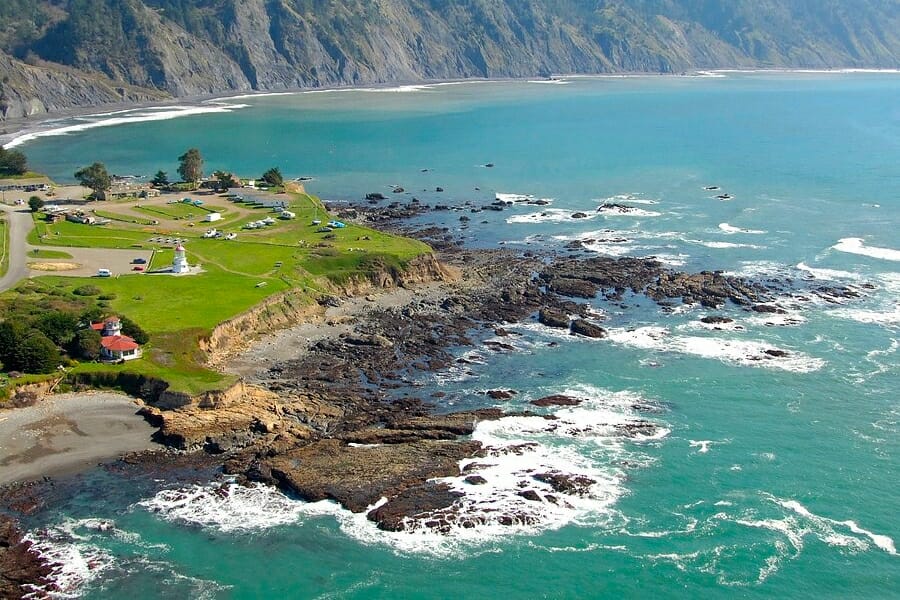
Located in Northern California is a hidden gem that offers visitors breathtaking views of the Pacific Ocean and rugged coastline. Shelter Cove’s terrain is varied, with rocky cliffs, sandy beaches, and dense forests all within a short distance of each other.
With a mix of volcanic and sedimentary rock formations, there are pretty impressive sights here in Shelter Cove. One of the most interesting things about this place is that it’s one of the few places in our state where you can find Amethyst.
To reach this place, you’ll need to drive and do a bit of trekking. But once you arrive, you’ll be rewarded right away with the stunning scenery and opportunities to find Amethyst. Just be sure to bring your hiking boots, a good sense of adventure, and a great grasp of our local collecting guidelines.
Where we found amethyst in Shelter Cove
You can find Amethyst by exploring Locality No. 3 in Point Delgada, Shelter Cove. This area is within the cove’s Coastal Range.
If your kids constantly ask “What’s this rock?”, this guide finally gives you an answer you don’t have to Google later. Quick photos, simple descriptions, and rugged pages make ID’ing rocks fun instead of frustrating.
🔍 Fast visual matching—no geology background needed
💦 Wipe-clean pages made for creeks, beaches & dirt
📚 Simple explanations for beginners of all ages
🌄 Great for California hikes, creek beds & camping trips
San Bernardino County
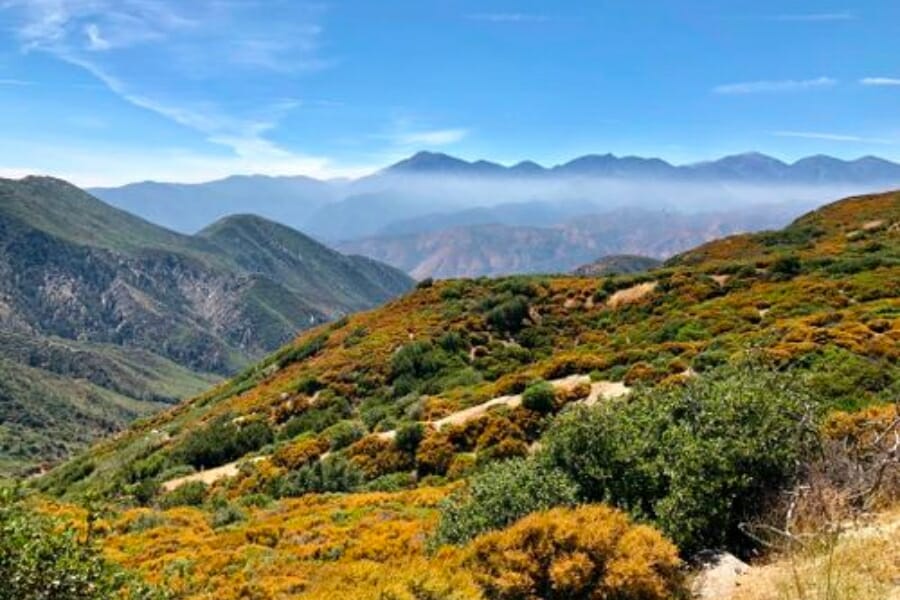
San Bernardino County is a diverse and expansive region located in Southern California. It’s home to a variety of landscapes, including mountains, deserts, and forests.
With its varied terrain, this county has plenty of opportunities for outdoor exploration. You can hike through the San Bernardino Mountains or go off-roading in the Mojave Desert. It also has a fascinating geology, with a mix of rock formations and minerals that date back millions of years. And one of them is Amethyst!
Deposits of Amethyst in San Bernardino County have a deep purple color that’s hard to find elsewhere. Whether you’re a seasoned rockhound or just looking for a unique souvenir, you won’t want to miss the chance to finding them here.
Where we found amethyst at San Bernardino County
There are different specific spots that you can explore here in San Bernardino County to discover Amethyst, such as:
- Amethyst Queen claim in Beck Spring
- Beck Mine
- Purple Heart Mine
You might be asking yourself, “Is Amethyst expensive?” Well, we’ve done an article on that, too, so make sure you check it out.
Hauser Geode Beds
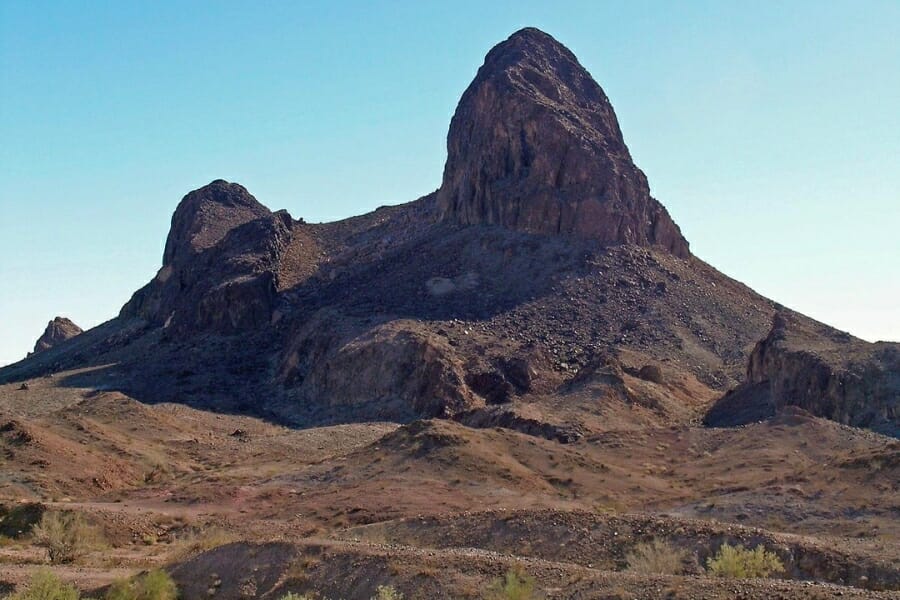
Hauser Geode Beds is a popular spot among rockhounds and gem collectors in our state. Located in the Mojave Desert, this area is known for its unique geological formations and its variety of gems and minerals.
This remarkable place has a rocky and barren terrain, with plenty of sand and scrub brush. It has a mix of volcanic and sedimentary rock formations that create the perfect conditions for geodes, including Amethyst-bearing ones, to form.
So if you’re looking for this unique and beautiful gemstone, make sure to add the Hauser Geode Beds to your list of must-visit destinations. To go here, you’ll need to drive on some rough dirt roads and be prepared for the desert heat— all part of a fun and great Amethyst mining adventure!
Where we found amethyst in Hauser Geode Beds
You can find Amethyst in the different nooks and crannies of Hauser Geode Beds in Thumb Peak, Palo Verde Mountains, so we highly recommend really going around the area for exploration.
Village of Volcano
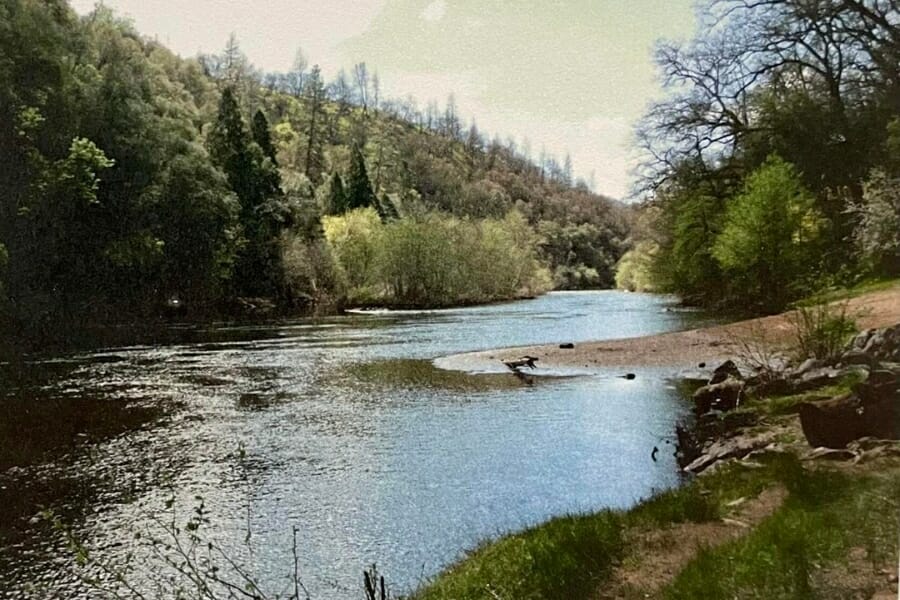
Volcano Village is a small community located in the foothills of the Sierra Nevada mountain range. The area is known for its rugged beauty and unique geology, with volcanic formations and mineral deposits that make it a popular destination for rockhounds and gem enthusiasts.
Volcano Village is hilly and forested, with plenty of opportunities for outdoor recreation like hiking and camping. It also has a mix of volcanic and sedimentary rock formations where a variety of minerals and gems have formed, including the beautiful Amethyst.
Getting to this remarkable location is relatively easy, as it’s just a short drive from the historic Gold Rush town of Jackson.
Where we found amethyst at the Village of Volcano
Explore along the stream gravels of the Volcano Village in Amador County to find some stunning Amethyst specimens.
Crystal Ridge
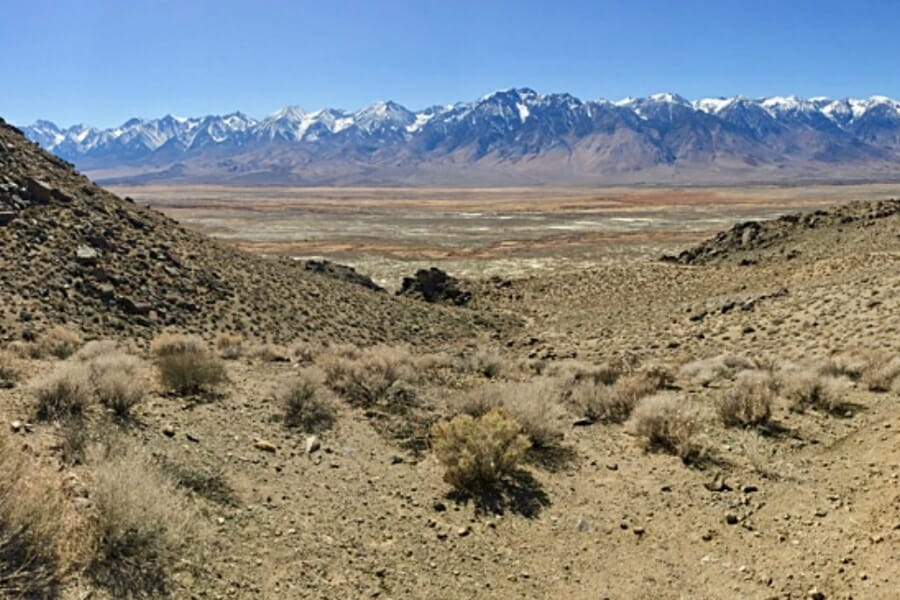
Crystal Ridge in Johnson Spring is a remote and rugged area located in the eastern foothills of the Sierra Nevada Mountains. It has a steep and rocky terrain, with plenty of scrub brush and sagebrush dotting the landscape.
Like our other recommended places above, Crystal Ridge has a mix of volcanic and sedimentary rock formations that sets the right conditions for Amethyst to occur.
Exploring Crystal Ridge can be a challenging but rewarding experience. The area is remote and largely undeveloped, with plenty of opportunities for hiking, camping, and rockhounding.
Where we found amethyst in Crystal Ridge
To find Amethyst in Crystal Ridge, make sure to really go around the area and explore its different spots.
Other Great Places To Mine For Amethyst in California
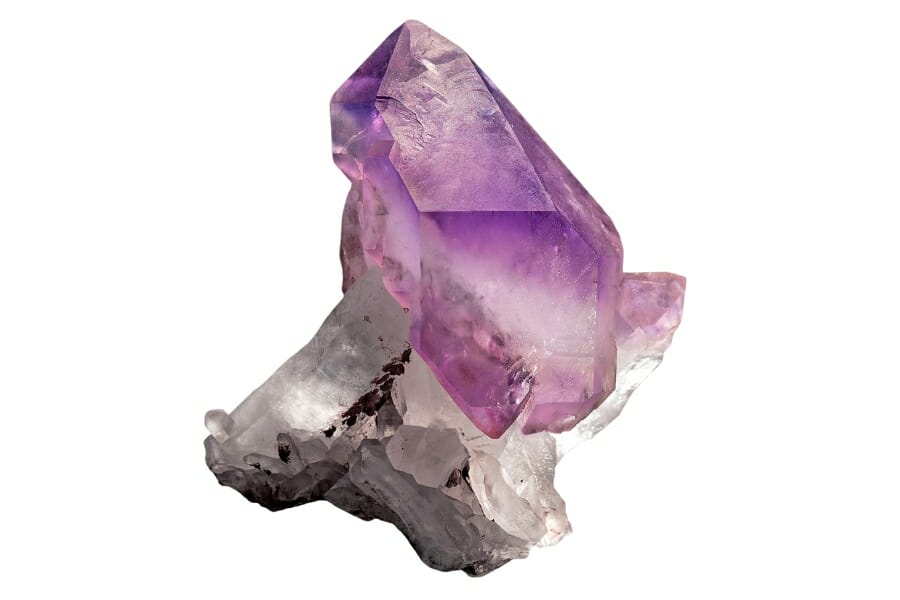
Since California is such a rich state when it comes to natural resources, there are many other different places here that you can explore to discover some stunning Amethyst gems. Below is a list of these places by county so you won’t have a hard time creating your itinerary based on it.
Our recommendations by county
| County | Location |
| Amador | Fiddletown Mining District (Oleta Mining District) |
| El Dorado | BBC Mine |
| Imperial | Black Hills |
| Lassen | Deposits of Crystal Hill in Red Rock |
| Los Angeles | Sir Kegian Gem Beds, west on Escondido Canyon Road |
| Modoc | Klondike group in High Grade Mining District, Warner Mountains |
| Modoc | Northern Star Mine in Warner Mountains |
| Mono | Bodie Mining District in Bodie Hills |
| San Benito | San Carlos Mine in Idria |
| Santa Cruz | Pacific Cement and Aggregate Company Quarry |
| Tuolumne | Kennedy Meadow |
Additional areas you can find amethyst
A handful of our recommended places above cover generally wide areas, so to help you focus your search, here are the areas where Amethysts typically abound. You may start you explorations here:
Streams and Creeks
Streams and creeks can be excellent places to find Amethyst because these waterways have the ability to transport rocks and minerals from their original source and deposit them elsewhere.
Amethyst often forms in veins or pockets within different kinds of rocks. Over time, erosion and weathering can break down these rocks and deposit the amethyst crystals in nearby streams and creeks.
Mines and Mine Dumps
Mines and mine dumps often contain large deposits of minerals and rocks that have been excavated from deep within the earth.
Amethyst crystals are frequently found in association with other minerals, such as quartz, calcite, and fluorite, which are also commonly mined. When these minerals are extracted, they can leave behind piles of rocks and tailings that contain Amethyst crystals.
Quarries
Quarries are typically located in areas that contain large deposits of rocks and minerals that have been excavated from deep within the earth. Amethyst is often found with other minerals that are commonly found in quarries. These minerals are often blasted or excavated from the quarry walls, creating large piles of rocks and debris that can contain amethyst crystals.
Pay-to-Dig Mines
Pay-to-dig mines offer a unique opportunity to explore and collect specimens from mines that have been specifically designed for public access. They are typically located in areas that are rich in minerals, and they offer collectors the chance to dig for Amethyst crystals in a safe and controlled environment.
Common Amethyst-Hunting Questions
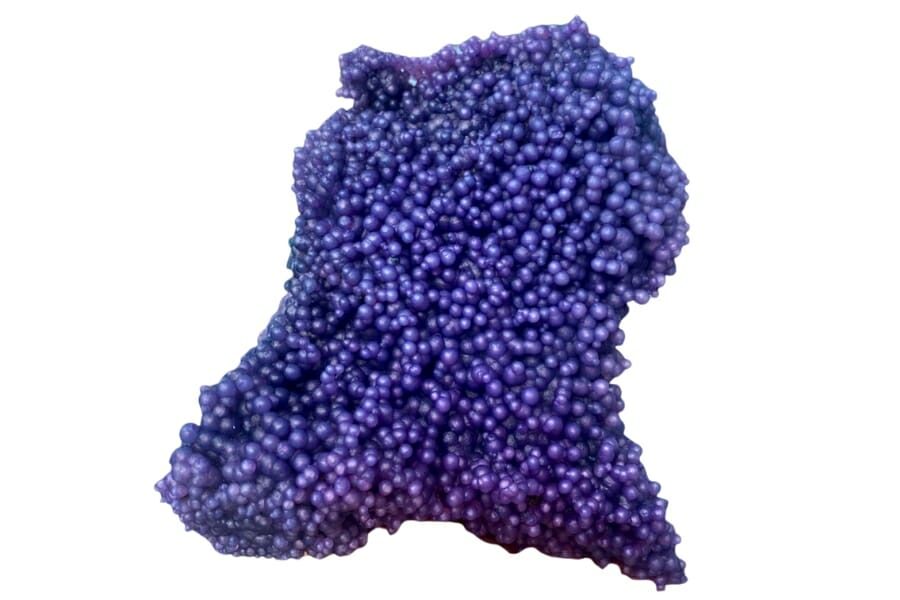
We’ve already shared where to mine Amethyst here, and now, we’re answering some of the most common amethyst-hunting questions in California in case you have the same inquiries in mind:
Where can you find Amethyst Geodes in California?
Luckily, Amethyst Geodes abound in our state! You can find them in the Sierra Nevada Mountains, Hauser Geode Beds, on the mountains near Santa Cruz, and at the Crystal Hill Mine in Santa Margarita.
Is it illegal to collect amethyst in California?
Collecting Amethyst in California is perfectly legal for as long as you do so in compliance with our local collecting guidelines. Also make sure that you are well-aware of any existing rules and regulations that protect the environment and biodiversity of the specific area that you will explore.
The Best Places To Buy Amethyst In California
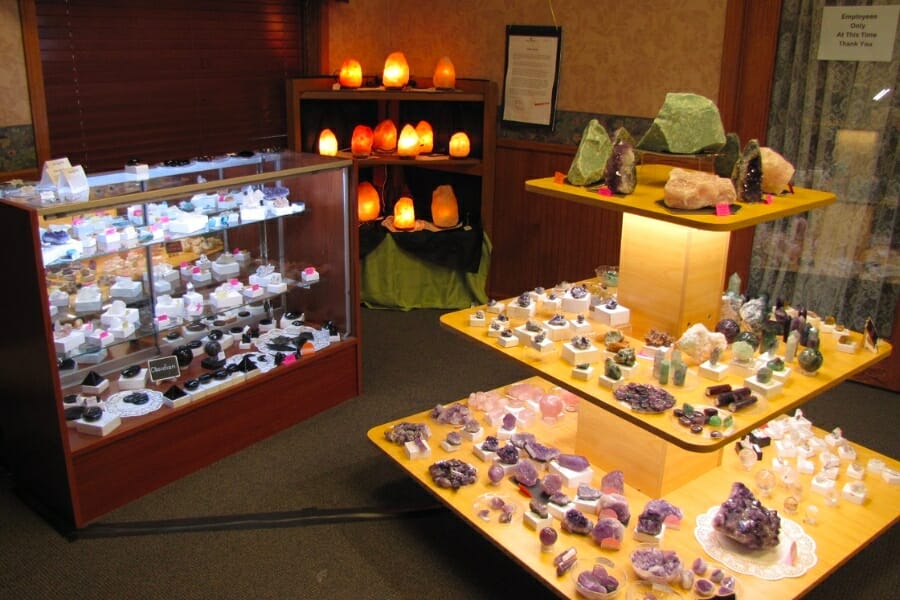
If you’re looking for an Amethyst specimen to add to your collections, chances are, you have specific characteristics in mind. In that case, your best shot of finding this specimen is by visiting our local rock and gem shops here.
Below is a list of some of our favorite ones. Check out their awesome selections!
California Gemstones – 5500 Grossmont Center Dr Unit B2-56, La Mesa, CA 91942
L.A. Gem Shops – 560 S Los Angeles St Unit 208, Los Angeles, CA 90013
Gems of the West – 41223B Big Bear Blvd, Big Bear Lake, CA 92315
Cosmic Candace – 110 W Pontiac Way UNIT 104, Clovis, CA 93612
The Geode Shop – 8039 Beach Blvd, Buena Park, CA 90620
Crystalarium – 534 N La Cienega Blvd Suite B, West Hollywood, CA 90048
Additional Places To Find Amethyst In Nearby States
Check out the guides we made for the nearby states where you can find amethysts as well:
If you have any recommendations for our list please leave a comment below!



